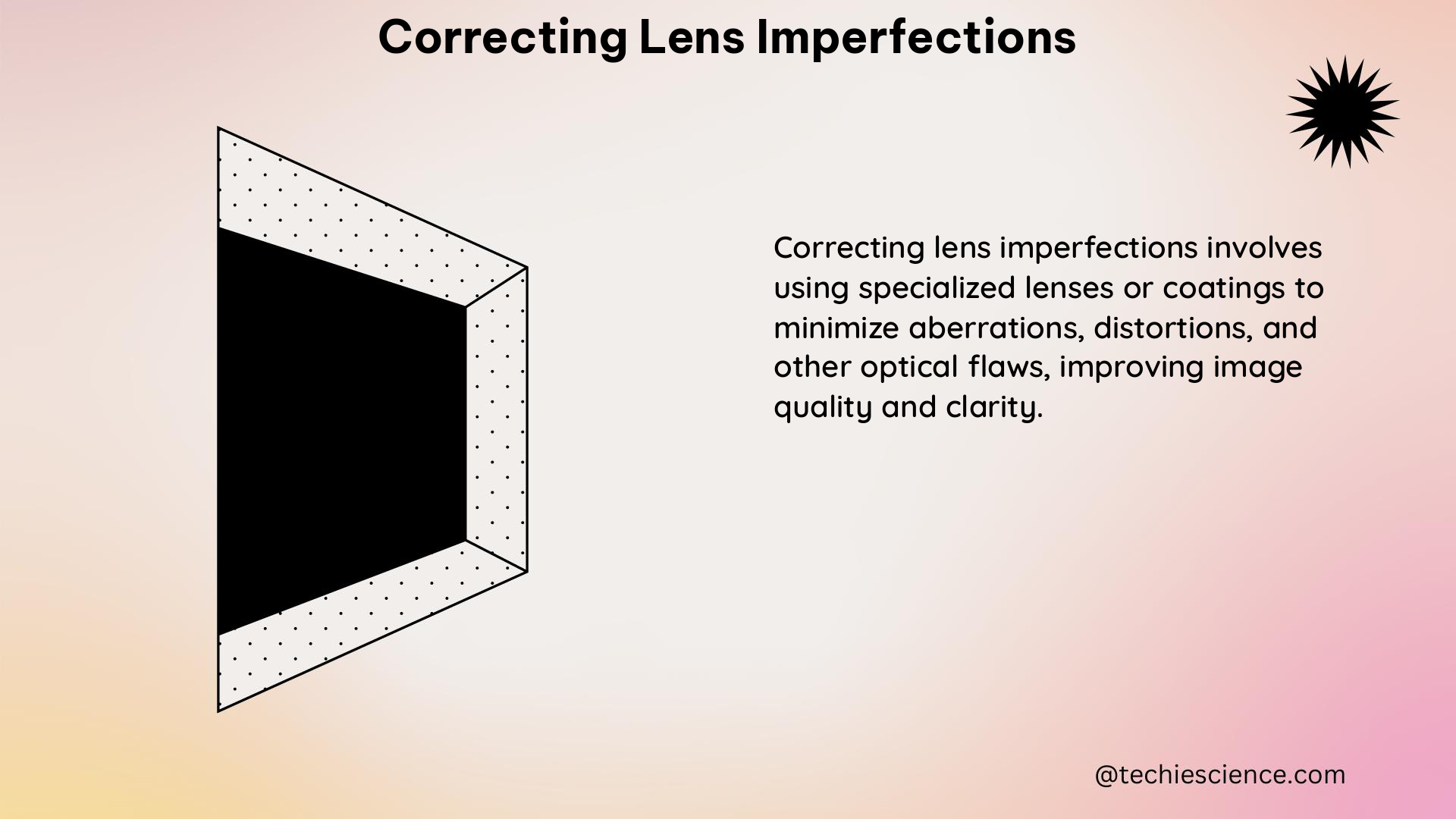Correcting lens imperfections is a crucial aspect of achieving high-quality images, whether in digital imaging for quantitative western blotting or in photography. Lens imperfections can take various forms, such as softness, geometric distortion, chromatic aberration, and vignetting, leading to image artifacts, high background, and poor data quality. This comprehensive guide will delve into the technical details of correcting these lens imperfections, providing physics students with a valuable resource to enhance their understanding and practical skills.
Understanding Lens Imperfections
Lens imperfections can be categorized into four main types:
- Optical Vignetting: This occurs when the brightness of the image decreases towards the edges of the frame, resulting in a darkened or vignetted appearance.
- Geometric Distortion: This refers to the warping or bending of straight lines in the image, leading to a distorted appearance.
- Lateral Chromatic Aberration: This imperfection causes different wavelengths of light to focus at different points, resulting in color fringing or fringes around high-contrast edges.
- Perceptual Blur: This type of imperfection leads to a general softness or lack of sharpness in the image, reducing the overall image quality.
Calculating Optical Characteristics of Lenses

The first phase of correcting lens imperfections involves calculating the optical characteristics of the lens. This process is typically carried out in a controlled environment, where specific targets are photographed, and a series of measurements are performed. The key steps in this phase are:
- Target Acquisition: Capturing images of specialized targets, such as checkerboard patterns or distortion grids, under controlled lighting conditions.
- Measurement and Modeling: Analyzing the captured images to evaluate the four lens imperfections (optical vignetting, geometric distortion, lateral chromatic aberration, and perceptual blur) and mathematically modeling them using a range of shooting parameters, including aperture, focal length, and distance.
- Data Processing: Applying advanced mathematical algorithms and computer vision techniques to extract the necessary data from the captured images and generate a comprehensive lens profile.
The resulting lens profile, known as a DxO Optics Module, contains detailed information about the corrections required for a specific lens-body combination. This module can vary in size from hundreds of kilobytes to several megabytes, depending on the complexity of the lens-camera pair.
Verifying Lens Module Accuracy
The second phase of the process involves verifying the accuracy of the lens module by testing the lens-camera pair in real-life shooting conditions. This phase ensures that the corrections applied by the module are effective and that the final image quality meets the desired standards. The key steps in this phase are:
- Real-World Testing: Capturing a large number of images (typically 100 to 500) in various shooting scenarios, including different focal lengths, distances, and subject positions.
- Evaluation and Validation: Analyzing the captured images to ensure that subject lines remain straight, regardless of the focal length or distance, and that subjects are evenly exposed no matter where they are positioned in the frame.
- Iterative Refinement: If necessary, the lens module is further refined and optimized based on the results of the real-world testing to ensure the highest possible image quality.
Applying Lens Corrections in Digital Imaging
In the context of digital imaging for quantitative western blotting, lens distortion calibration is a crucial first step in resolving any metric application with a camera. Improving digital imaging for quantitative western blotting requires expertise in blotting, detection, and imaging techniques, as well as data validation. By applying the appropriate lens corrections, researchers can ensure that their digital images are free from distortions and artifacts, leading to more accurate and reliable quantitative analysis.
Advanced Techniques and Considerations
- Lens Aberration Theory: Delving into the underlying physics of lens aberrations, such as spherical aberration, coma, and astigmatism, can provide a deeper understanding of the root causes of lens imperfections and inform more advanced correction techniques.
- Computational Imaging: Exploring the use of computational imaging techniques, such as deconvolution and image stacking, can further enhance the correction of lens imperfections and improve overall image quality.
- Sensor Calibration: Integrating sensor calibration into the lens correction process can help address issues related to sensor non-linearity and other sensor-specific imperfections.
- Adaptive Optics: Investigating the potential of adaptive optics, which can dynamically adjust the optical system to compensate for atmospheric turbulence or other environmental factors, may lead to even more precise lens correction capabilities.
By mastering the techniques and considerations outlined in this comprehensive guide, physics students can develop a deep understanding of correcting lens imperfections and apply these skills to a wide range of applications, from digital imaging for quantitative western blotting to advanced photography and beyond.
References
- Correcting non-linear lens distortion in cameras without using a model
- Improving Digital Imaging for Quantitative Western Blotting | Bio-Rad
- An objective measurement approach to quantify the perceived distortions of spectacle lenses
- Refractive Focus | Contact Lens Spectrum
- How DxO software gets rid of camera and lens flaws
Additional Resources

The lambdageeks.com Core SME Team is a group of experienced subject matter experts from diverse scientific and technical fields including Physics, Chemistry, Technology,Electronics & Electrical Engineering, Automotive, Mechanical Engineering. Our team collaborates to create high-quality, well-researched articles on a wide range of science and technology topics for the lambdageeks.com website.
All Our Senior SME are having more than 7 Years of experience in the respective fields . They are either Working Industry Professionals or assocaited With different Universities. Refer Our Authors Page to get to know About our Core SMEs.